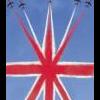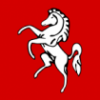

G.R.Morrison
Members-
Posts
245 -
Joined
-
Last visited
G.R.Morrison's Achievements

Established Member (3/9)
650
Reputation
-
As mentioned in the eighth post in this thread, I know of no photo showing a snake on the starboard (i.e., "RH') side of either of the Stukas known to have a snake on the port side. But, "research is ongoing," and there still may be surprises lurking in great-grandpa's forgotten photo album(s). GRM
-
Of those linked by Mr. Brewer, the (small) SC 50 and (large) SC250 are the appropriate ordnance for the vertical internal racks of the Ju 52 and early He 111. A number of kits include these, the dilemma in 1/72 being the thickness of the fins. The SC250 would have the small nose ring installed, as these were suspended from it, falling 180° upon release. Color-wise these tended to be in darker green or RLM 02; larger ordnance, too big to fit internally, were often light blue (RLM 65). Early in the war the high-explosive, thin-walled SC 50 and SC250 usually had the entire tail cone painted yellow (on the thicker-case SD250, the tai cone was red); soon this was reduced to lengthwise yellow stripes between the fins (one between the fins in each of the four sections). Good luck with your project, GRM
-
The three Gruppen of the StG 3 acquired the Ju 87D at different points. The III./StG 3 (formerly the II./StG 2) were the first to receive the Ju 87D-1 in March 1942 while stationed on Sicily for ops over Malta. It was during April 1942 that the III./StG 3 transitioned from using ‘T6’ to ‘S7’ The II./StG 3 received Ju 87D-3s from late May 1942. This is the unit that lost two dozen in the 25.Nov. 1942 American light tank attack on Djedieda (Tunisia) airfield (but with replacements transferred from Sicily, they were operational again two days later). The I./StG 3 were still using the old Ju 87R-2 into the summer of 1942. Their most-experienced pilot, Lt. ‘Jupp’ Wenigmann (who had received the Ritterkreuz on 6.July 1941 after 138 missions) was killed 3.July 1942 near El Alamein in a Ju 87R-2. Camouflage: a few Ju 87D were finished with RLM 79 uppers, but most were in the conventional RLM 70/71 factory-applied ‘splinter’ pattern. The Stuka was always a ‘dirty bird,’ with prominent exhaust staining on the fuselage sides. The longer-winged Ju 87D-5 didn’t become operational until the summer of 1943, and so never served in North Africa. Some were in use in Sept./Oct./Nov. 1943 against the RN in the Dodecanese campaign (six destroyers sunk, four cruisers crippled/damaged). No Ju 87G-1 or G-2 served in North Africa or the Mediterranean/Aegean theatre. I do not know if the Academy 'Kanonvogel' kit includes the necessary wing racks and dive brakes. Good luck with your project, GRM
-
You are unlikely to find a document mandating the application of this ‘Schachbrettmuster’ decoration of the 1./JG 1. Prien, Stemmer, Rodeike and Bock, Die Jagdfliegerverbände der Deutschen Luftwaffe 1934 bis 1945, Teil 10/II Reichsverteidigung 1943, 1.1 bis 31.12.1943, p.92 states “Mitte 1943“ Fw 190A-4Y WNr.140602 “weiße 6”, photographed in May, has a factory-standard finish on its cowl. Fw 190A-4Y WNr.583 “weiße 10” had a white cowl in June (it was lost 28.July in combat with four-motors, Uffz. Knespel killed near Groningen) To go by photographed examples of the ‘checkered,’ we’re left with the same date-generalizations, ‘summer 1943’ Fw 190A-4 WNr.140601 “weiße 4” 25.June 1943, Schiphol, slightly damaged in a taxiing accident (non-combat flight) Fw 190A-6 WNr.530135 “weiße12” Uffz. Bernhard Künze, 28.July 1943 Fw 190A-5 WNr.410053 “weiße 1” Uffz. Bernhard Künze, 19.August 1943 Fw 190A-6 “weiße 9” Lt. Heinz-Günther Lück, “September 1943” Fw 190A-6 WNr.550490 “weiße 5” Uffz. Rudolf Hübl, 8.Oct. 1943, belly-landing near Nienburg/Weser after being hit by defensive fire. I do not know of any other photographed examples after the second week in October 1943. GRM "Ich bin kein ‘Experte,' nur Historiker.”
- 1 reply
-
- 4
-

-

-
Robert Lee Scott, Jr. c.o. of the 23rd Fighter Group (4.July 1942 – 9.Jan. 1943); 10 victories with the 23rd between 31.July 1942 – 26.December 1942. His combat reports list his aircraft as “P-40E” except the July and December claims, then as “P-40” P-40E 11496 “white 7” P-40K-1 245914 Good luck with your build, GRM
-
To echo Mr. Ritz, by Werknummer. These can run from "666" (an Erla-built E-3) to 7696 (a Fieseler-built E-7), with LOTS of gaps in between. The 'round top' and the 'square top' canopies are not indicators. I can't tell the difference between the barrel of a MG-FF (109E-3) and MG-FF/M (109E-4, E-7) by looking. 😉 Bf 109Es were built by AGO (Oschersleben), Arado (Warnemünde), BFW (Augsburg), Erla (Leipzig), Fieseler (Kassel), Focke Wulf (Bremen), Mtt (Regensburg), and WNF (Wiener Neustadt). Some 109Es that were contracted as E-1s wound up being completed as E-4. With additional 'plumbing' for the 300 liter drop tank, an E-7. GRM
-
From Übersichtsliste der Änderungsanweisungen, Messerschmitt A.G. Augsburg, 4.April 1941 and 10.Oct. 1941 Airframe reinforcement straps were installed on: Mtt-Regensburg GmbH F-1 5601-5779 – but not every one.* Erla F-2 8078-8133, but not every one. Ago 12601-12755, but not every one. Arado 5401-5499, 5504-5528, but not every one. WNF-built Bf 109F-1 (6601-6650) and F-2 6601-6771, 6773-6783, 6785-6800 Regarding the F-4, Prien & Rodeike, Messerschmitt Bf 108 F, G, & K Series, ©1993, pp25, 27, “The external stiffeners on the tail unit were more often absent from the F-4 series than the F-2; all the same a considerable number of F-4s were built with the stiffeners installed beneath the horizontal stabilizer. These seem to have been limited to the early 7000 [WNF-built] and 8330 [Erla-built] production lots, although they were absent in some cases.” * The Werknummern are listed, revealing the exceptions. In the case of Marseille's WNr.8693 (Feb. 1942) and 8673 (Sept. 1942), both had the stiffening straps. His WNr.10079 (May 1942) and WNr.10137 (June 1942) did not. GRM
-
G.R.Morrison started following Bf-109 F-4z wheels question
-
You're welcome. Happy to help when I can. There are a few seconds of WNr.10059 between 23:52 - 24:02 in this (warning, this has been 'colourized'): You can also find images of WNr.10059 on Falcon's website, here's a still from the Wochenschau newsreel: https://me109.info/display.php?from=site&lang=de&auth=e&name=ergebnis_suche&fotonummer=16734 Here's a view from 2 o'clock: https://me109.info/display.php?from=site&lang=de&auth=e&name=ergebnis_suche&fotonummer=1333 and from 11 o'clock (note again the under cowl was not completely yellow): https://me109.info/display.php?from=site&lang=de&auth=e&name=ergebnis_suche&fotonummer=819 Nishikawa created an accurate portside profile, nineteen years ago: https://me109.info/display.php?from=site&lang=de&auth=e&name=ergebnis_suche&fotonummer=4740 Keep in mind how rough the desert was on equipment. The rear faces of propellor blades were often 'sand=blasted' to bare metal (check photos). Enjoy, GRM
-
There is no evidence that any of Marseille’s Bf 109F-4s were “F-4Z” The monthly returns for the Luftwaffe’s inventory, between March-September 1942 (preserved in BAMA RL 2 III/874 & 875), lists the following units with some Bf 109F-4Z: I., II., IV./JG 1 I./JG 26 I., II., III./JG 53 I./JG 77 None were issued, nor on-strength with the I./JG 27 As to your subject, which of Marseille’s aircraft? WNr.8693 (Feb. 1942) This one had the red-brown primer rudder, no white wingtips. This machine was lost on 27.June 1942 as the result of a forced-landing at Marsa-Matruh after experiencing engine problems. The pilot on this occasion was Fw. Karl-Heinz Berben. WNr.10059 (May 1942) This one had 68 Abschußbalken on the rudder, less yellow beneath the cowl. There is mopic film of this one, shot in the first week of June, Marseille switching-off the motor and coasting the last few yards. This aircraft was later renumbered “12” and was lost 15.Sept. 1942 in a mid-air collision 25 km SW of El Alamein while being flown by Lt. Friedrich Hoffmann, who died of his injuries on 12.October. WNr.10137 (June 1942) This one is recognizable by the grime / staining around the fuel door (port side of the cockpit), ‘70’ in wreath on the rudder with rows of Abschußbalken beneath, an additional thirty-one by 17.June 1942. This one was destroyed in a 25.July 1942 bombing attack on Turbiya while Marseille was on home leave. WNr.8673 (Sept. 1942) This one had its “14” in a smaller size and style, trimmed black, and the I./JG 27 emblem on the cowl. The rudder had ‘100’ in a wreath and eventually fifty-one Abschußbalken beneath. WNr.8673 had its rudder removed (and preserved) and was later assigned to 1./Schl.G.2 (a ground-attack unit in North Africa). It was repainted as “weiße 11.” Fw. Bernhard May was reported as MIA in this aircraft on 22.October 1942 south of El Alamein, probably due to Flak. Which tires? Consider how hard Libyan landing grounds were on rubber, sharp stones, soft patches, and the sun (many photos of Luftwaffe aircraft show cloth sun-covers). They didn’t last long in this harsh environment. Most of the I./JG 27 Bf 109F-4s undergoing maintenance (when the tires can be easily seen) show ribbed tires (examples: “rote 3” of the 2./JG 27, undercarriage retraction test; “gelbe 10” of the 3./JG 27 being recovered, and reassembled, in a series of seven photos), but WNr.10059 appears to have unribbed ‘smooth’ tires. WNr.10137 may have had unribbed tires, but the best frontal aspect isn’t a close-up, Fw. Emil Kaiser and Marseille (in the motorcycle’s sidecar) riding away, toward the photographer. Good luck with your build, GRM
- 4 replies
-
- 10
-

-

-
The 'ancient' (PK-502, 1979) 1/32 Bf 109E-7 had a pair of MG/FF, part numbers 92, 93, 94, though they may be rather 'anaemic.' Aber produced a barrel set in 2010, A32112, but it doesn't include the remainder of the MG17 and MG-FF Master, AM-32-005 made a barrel set (the MG17s are just the tips visible outside the gun troughs. GRM
-
No worries, “Lapsus Calami Happens.” Bf 110C-4 WNr.3551 “2N+EP” of the 9./ZG 76 Pilot and Staffelkapitän Oblt. Gerhard Kadow and Bordfunker Gefr. Helmuth Scholz POW 11.July 1940 due to combat (and subsequent forced landing) with Green section Hurricanes from 238 Sq., or Sq/Ldr Dewar of 87 Sq. & F/O Riddle of 601 Sq. per Goss. This one quite new, having been built by MIAG at Braunschweig in June 1940 Yellow letter outboard of the upper wing crosses (this practice seen on other 110Cs of this Gruppe, so likely). Under the wingtip, the letter ‘E’ was more-likely to be black. As Black Knight suggested, yellow on the front of the spinner(s). Werknummer in white numerals on the aft part of the fuselage. The III./ZG 76 used “2N”, whereas the I. & II./ZG 76 used “M8” BTW, “U8” was used only by the I./ZG 26, the II. & III./ZG 26 used “3U”, and by mid-1941, the I./ZG 26 adopted '3U' as well. A number of Luftwaffe units used Staffel indicators that seem ‘wrong’ (i.e., 9, Staffel should be indicated by using a ‘T’), but this practice was continued well into the war by some outfits, such as the II./StG 1 (which used what ‘should be’ III. Gruppe indicators, R, S, T), and the III./StG 1 which, continuing with their old Trägergruppe 186 codes of a I. Gruppe (H, K, L). The KGr.z.b.V. (transport Gruppen) continued with this ‘confusion,’ which can make identifications challenging. Sorry I can’t help with decal sourcing. GRM
-
No worries over a 'tardy response,' we're discussing eighty-year-old flying machines. The only Ju 86 loss I have for 9.Jan. 1943 is Ju 86E WNr.4031 of the KGr.z.b.V. 21, aerial combat with enemy fighters at PlQu. 25 613/44, no crew casualties. Because the aircraft came down ‘diesseits der Front,’ no Kennung was recorded. This one had been built by Blohm & Voss Flugzeugbau at Wenzendorf in 1937, and had formerly carried the registration 'D-AHUI' GRM
-
Richard502, The late Austrian archivist Horst Boog reliably estimated that 97% of the Luftwaffe's records – remember, they had more that just flying units -- is gone, forever. Consider, then, a 100-piece puzzle with only 3 pieces present, and trying to determine what it might have looked like. 14.December 1942 – yes, the weather was bad. Ju 52/3mg8e WNr.7653 “GG+FA” of the 2./KGr.z.b.V. 500 crash-landed (due to bad weather) at Basargino (this airfield was located 9 km SSW of Pitomnik, described as poorly-equipped and totally inadequate to handle sustained day and night transport operations). Another example was Ju 52/3mge WNr.3831 (WNr.5831 per Menke, which seems more plausible) “NG+PD” of the KGr.z.b.V. 700; reported lost 14.Dec. 1942, cause unknown, on a mission to Stalingrad. The crew returned. More Heinkel He 111s flew that day than Ju 52s, but here is a possibility: Ju 52/3mg8e WNr.7526 “DP+EW“ of the 3./KGr.z.b.V. 500, piloted by Fw. Walter Kellner, landed at Pitomnik (from Tazinskaja) at 18:30 on 13.Dec., took off for ‘Moro’ (Morosowskaja) at 13:00 14.Dec. 1942, landed there at 14:25. This aircraft was later destroyed, 24.Dec. 1942 in a bombing attack at Tazinskaja. The only records I have for flights into Pitomnik on the 14.Dec. are two He 111H-6s of the 4. and 5./KG 27, and a Ju 52 of the 3./KGr.z.b.V. 172, but these flew out on the morning of the 15.Dec. Markings for the 3./KGr.z.b.V. 500 machine: the KGr.z.b.V. 500, like many other transport units, used a three-letter / number marking painted on the rudder.* A large ‘B’ (for the Kommandeur, Beckmann, a WW-I ace still flying operationally in 1942), a (smaller) numeral, ‘3’ to indicate the Staffel, and beneath, the aircraft’s individual letter. In this case it is possible that was ‘E’, but it might be another letter, unknown to me. The unit emblem was the Stadtwappen Dortmund (Beckmann’s home town), often, but not always applied to both sides of the aircraft’s nose. GRM * Briefly, these rudder codes were originated in the autumn of 1941 by the Technical Officer, Lt. Gerhard Wasserkamp, of the Einsatzgruppe I/LLG 1 of Major Richard Kupschus, to allow easy identification of units and aircraft in the field. Many transport aircraft were switching units, new or replacement aircraft arrived constantly. Instead of time-consuming repainting of codes and unit markings, a simple three digit code was painted in yellow (exception = white) on the vertical tail/rudder of the planes. Rudder codes always superceded what may be painted on the fuselage, as a transport unit might be quickly-assembled from aircraft originating at up to twenty duty stations, some of which may bear the Kennung of a previous unit, or have retained their Stammkennzeichen.
-
Three years ago I made a few observations about their 1/32 triplane, and excepting the box art / decal choices, the following may be of some use: The boxart now has Kirschstein's 586/17 which Udet inherited, and one of the options is Klimke's 577/17. Being 'a good son,' he took his mother's advice and marked his machine with the anchor (of Hope). The part numbers may be the same , or different -- I have 'only' their 1/32 version. Enjoy your foray into the air of a century past, GRM
-
Two SC250s for the ventral rack is far more-likely, but the II./ZG 76 were flying escort (rather than bombing) missions. They were soon returned to Germany, and became the III./NJG 3 in November 1941. The wing racks were introduced as a standard feature on the Bf 110E. Most of the III./ZG 26 machines that went to North Africa in the spring of 1941 were 110D. These have the extended tail to accommodate a dinghy, a reassurance on trans-ocean flights. GRM



